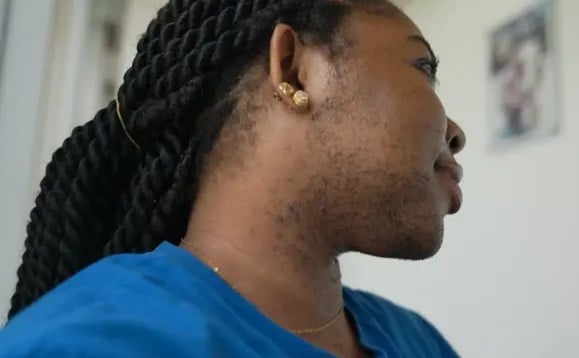I became curious after seeing my friend — a lady — shave the hair on her chin more than once. Why would a female have facial hair in the first place? Not wanting to sound insensitive, I decided to look it up rather than ask. Apparently, there is a medical condition that causes females to have excessive hair on their faces called hirsutism.
According to a study, hirsutism is the most common endocrine disorder, affecting between 5 and 10% of reproductive-age women in the general population.
Research suggests that it is predominant among dark-skinned women. While hirsutism can also occur in men, it is difficult to recognise and is rarely seen in children. However, it can be a sign of precocious puberty.
Without further ado, here is what you need to know about hirsutism.
What is hirsutism?
Hirsutism is a common condition that primarily affects women and results in excessive growth of dark or coarse hair in parts that it usually does for men like the face, chest and back.
The hair is often dark and coarse instead of the light, fine “peach fuzz” that covers most of the body.
Hirsutism prevalence increases with age, especially after the menopause.
What causes hirsutism?
Hirsutism is majorly caused by high levels of male hormones called androgens and follicle sensitivity.
Women’s bodies make androgens too but it causes hirsutism when the amounts are too high.
In the case of follicle sensitivity, the androgen levels may be normal but the hair follicles are overly sensitive to androgen, the male hormones.
However, hirsutism can be a symptom of other conditions because these conditions tend to increase androgens. They include:
- Polycystic ovary syndrome (PCOS): Several studies have stated that 75% to 80% of people with hirsutism have PCOS.
- Cushing’s syndrome happens when there are high levels of the stress hormone cortisol for long periods.
- Tumors in the adrenal glands and ovaries.
- High insulin levels. Insulin can trigger the ovaries to produce androgens.
- Congenital adrenal hyperplasia: an inherited condition that can cause adrenal glands to make too much androgen.
- Menopause
What are the symptoms of hirsutism?
Excessive dark hair growth in parts like the face, chest, inner thighs, and back, and virilization are hirsutism’s major symptoms.
Virilization is a process in which women develop male traits. Signs of virilization include:
- Deep voice
- Receding hairline
- Acne
- Decreased breast size
- Increased muscle development
- Clitoris enlargement
- Oily skin
How is hirsutism treated?
Fortunately, several ways have been suggested for the treatment of hirsutism. They include:
- Lifestyle modification
The lifestyle modification includes a change in diet, regular exercise and weight loss. If a person is overweight and has hirsutism, it is advisable to shed some fats.
Several studies have also found that losing weight can help lower androgen levels and then in turn reduce excess hair growth.
- Medications
There are some medications that can be used to reduce hair growth. However, it depends on the cause of hirsutism.
In a person whose hirsutism is caused by high androgen, they are advised to use anti-androgen medication or birth control pills. These medications will help reduce the production of the androgen causing the hair growth.
However, it is best to get a medical practitioner’s guide before getting out using any medications to treat hirsutism.
- Hair removal options
These options include non-medical and medical ways to get rid of hair. For the non-medical, there is the waxing, shaving, and depilatories.
For cosmetic procedures, there is laser hair removal and electrolysis. The use of the eflornithine cream is the medical option.
The cream helps slow down the growth of hair. However, a doctor’s guide and prescription must be followed before purchase and use.
It is almost impossible to prevent hirsutism. However, the risk can be reduced by some lifestyle modification and healthy living.
Copyright 2025 TheCable. All rights reserved. This material, and other digital content on this website, may not be reproduced, published, broadcast, rewritten or redistributed in whole or in part without prior express written permission from TheCable.
Follow us on twitter @Thecablestyle

